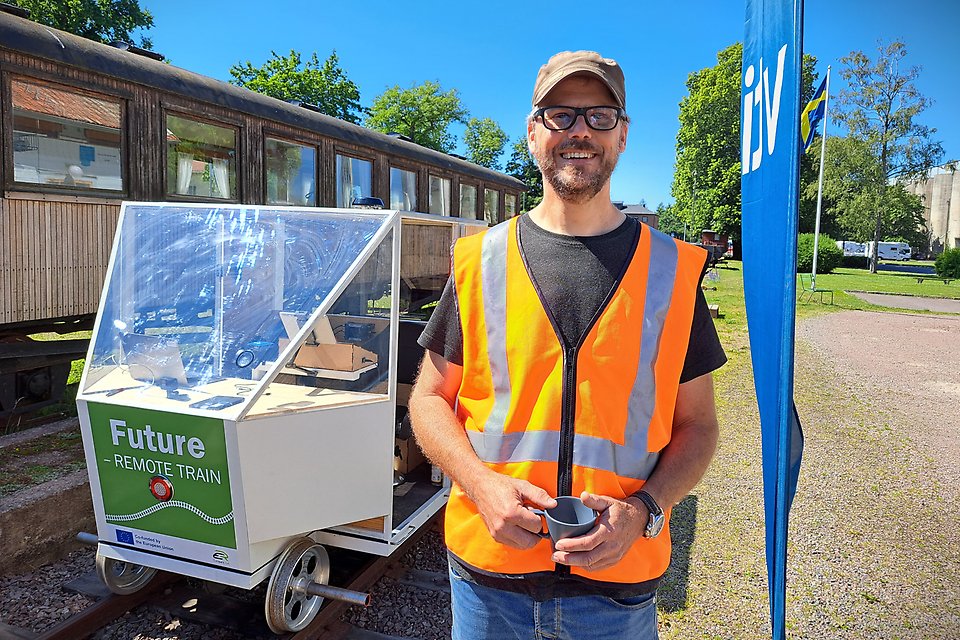
The train of the future on a 150-year-old railway. A research platform built by students at Linköping University. A multi-partner international collaboration led by VTI. Yes, the Future Remote Train research project is actually all of these rolled into one.
What will the trains of the future look like? Will they be streamlined creations that operate fully autonomously without any human intervention? Yes, probably in the very distant future. But along the journey – perhaps within 15–20 years – remote-controlled trains are much more likely. This means trains that are controlled remotely by an operator using the 4G and 5G public telecommunications network.
The possibility of remote control could also be an important backup if the self-driving trains were to lose their autonomous capability for some reason.
“Thus, remote control is both an intermediate step towards full autonomy and a backup system in the event of autonomous train failure,” says project manager Tomas Rosberg, who describes the Remote Train project as one of the most fun he has worked on.
“There are a lot of people involved, in different roles and from different disciplines. I think it’s a lot of fun. And I also like railways. It’s an environmentally friendly way of travelling, and we need to invest in our railways in Sweden.”
During the testing in Vadstena, where the Wadstena Fogelsta Railway Museum Association lent out the 150-year-old narrow gauge railway, two things in particular were tested: the connection to the control centre at VTI in Linköping, and crossing at level crossings. The project will continue for another two years, and further testing will be carried out both in Norway and at the Swedish Transport Administration’s facility outside Västerås.
The train used in the testing was built by students at Linköping University’s civil engineering programme. Over three semesters, i.e. 1.5 years, three groups developed the chassis, built the body and interior, and assembled all of the components into a functioning vehicle.
For VTI, the collaboration with Linköping University is a prerequisite for being able to conduct the project at all, not least to reduce costs. For the university, the train is an excellent project for aspiring civil engineers.
“It is something concrete for the students to sink their teeth into, where they solve a lot of problems during the work. It is also a project where they get to see a finished end result, something more than just a drawing,” says Micael Derelöv, senior lecturer at Linköping University, who was present on the first test day in Vadstena.
“It’s great fun to be here and see that it really works. It also shows that Linköping University can deliver.”
In addition to the narrow-gauge railway association and Linköping University, the Norwegian University of Science and Technology (NTNU) is also an important partner in the project. In the spring, two Norwegian students were among those who conducted their degree project in Linköping, in which they tested the image transmission from the train to an operator in VTI’s simulator hall in Linköping.
Future Remote Train is part of the larger EU programme Future, where a total of 50 partners are working together to develop the trains of the future in Europe. The railway between Vadstena and Fågelsta is 9.6 kilometres long and Sweden’s oldest preserved narrow gauge railway.
Text: Mikael Sönne
Contact
Tomas Rosberg
Researcher tomas.rosberg@vti.se






Follow us: